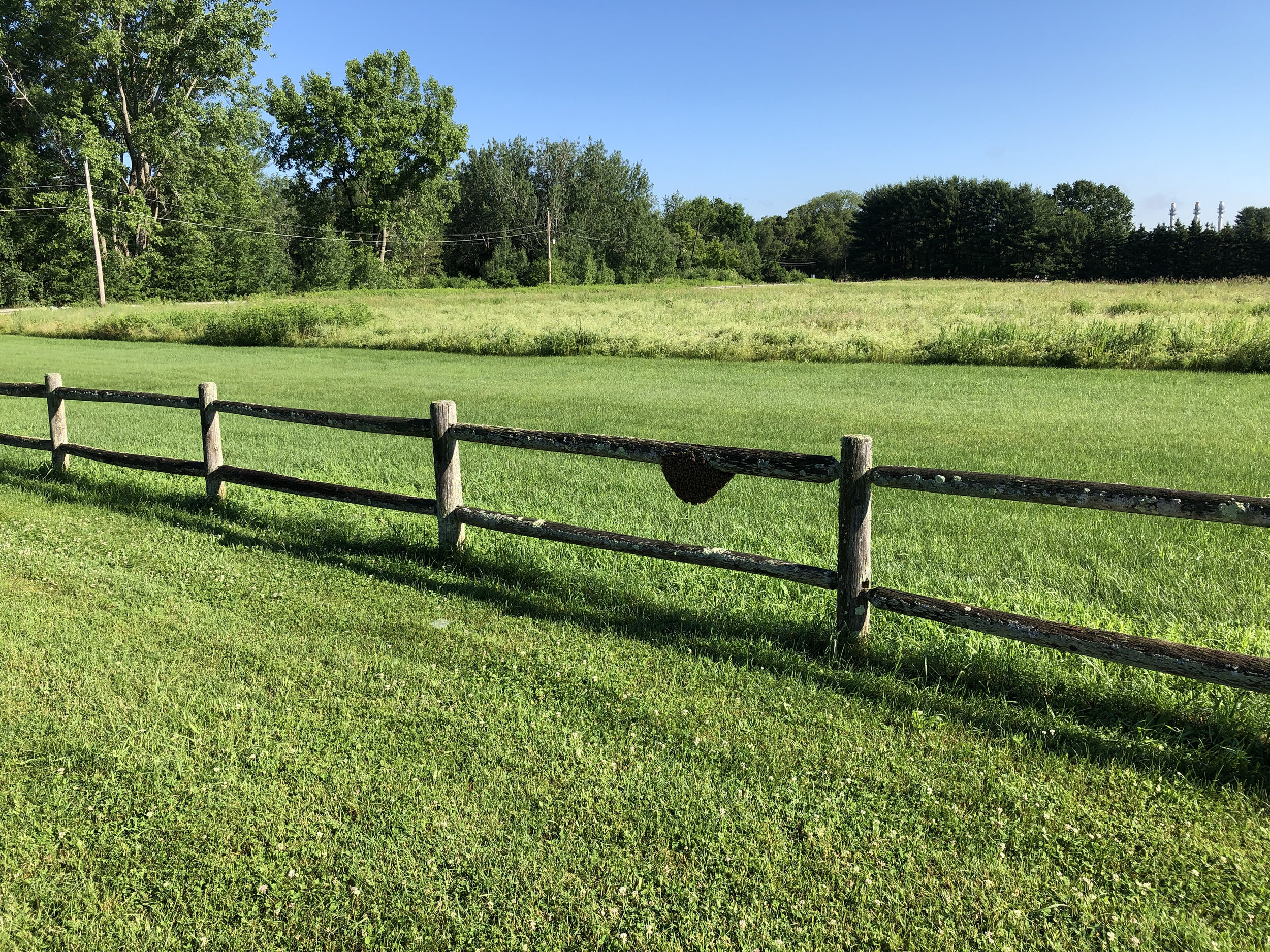


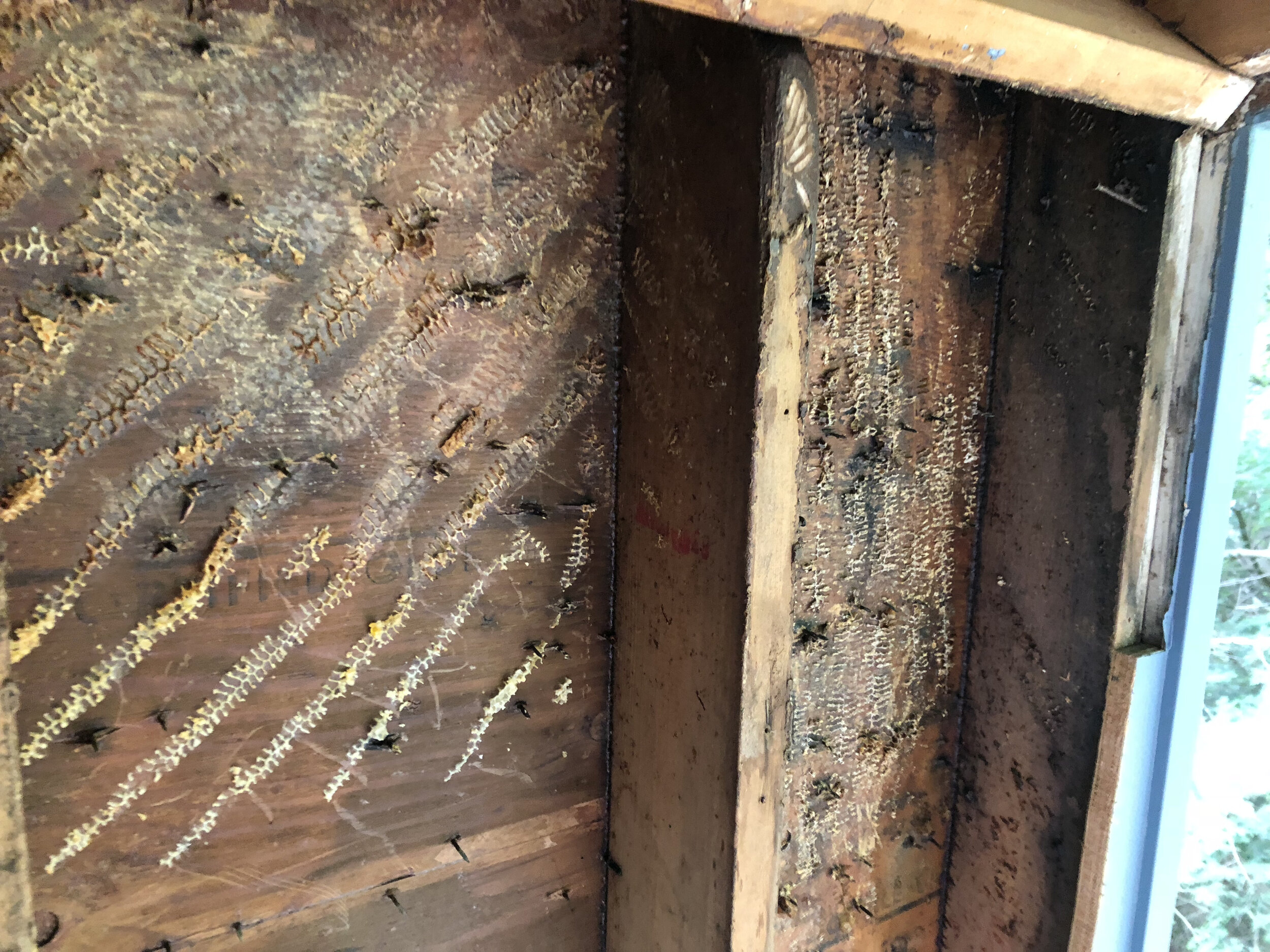


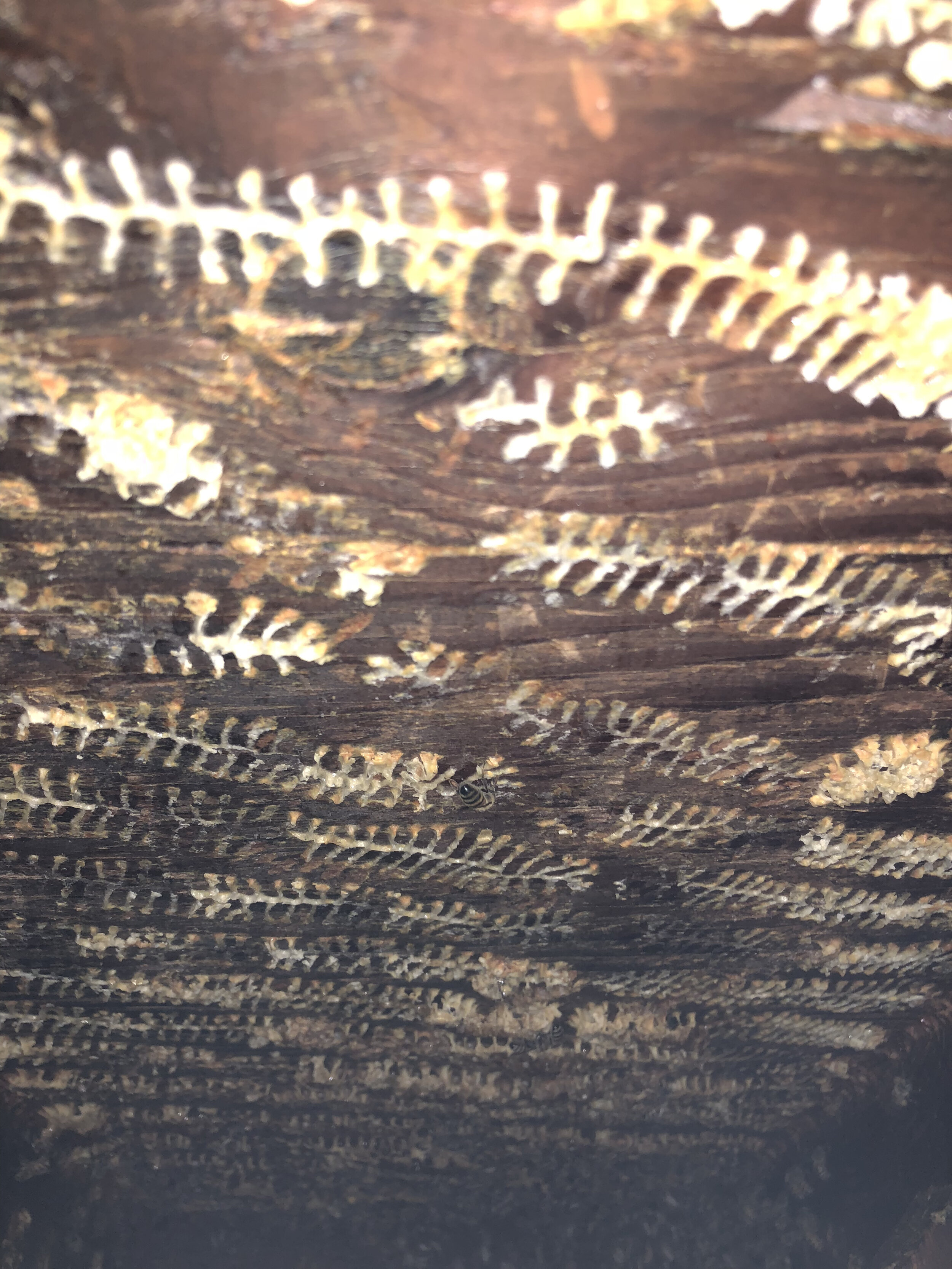
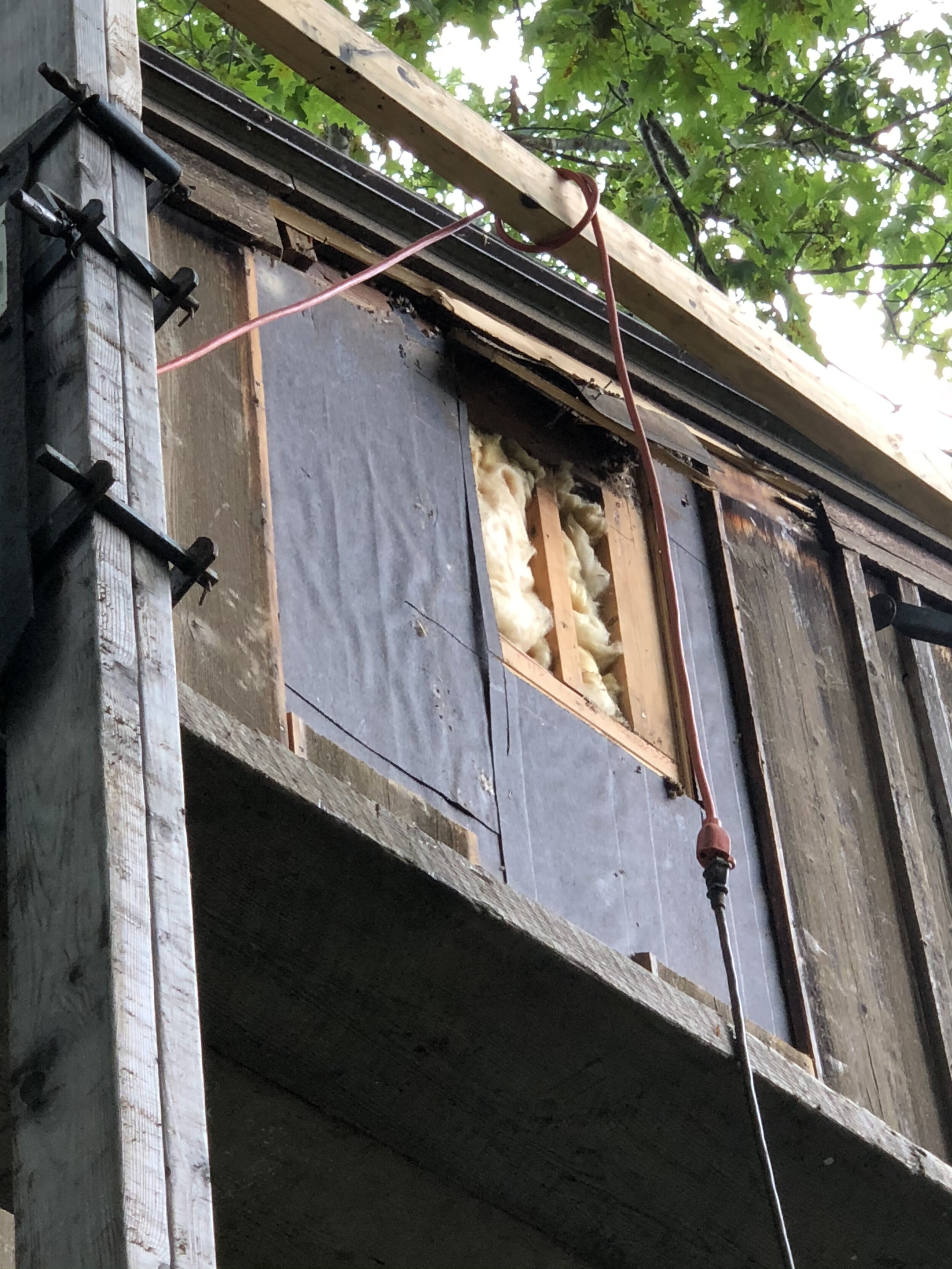



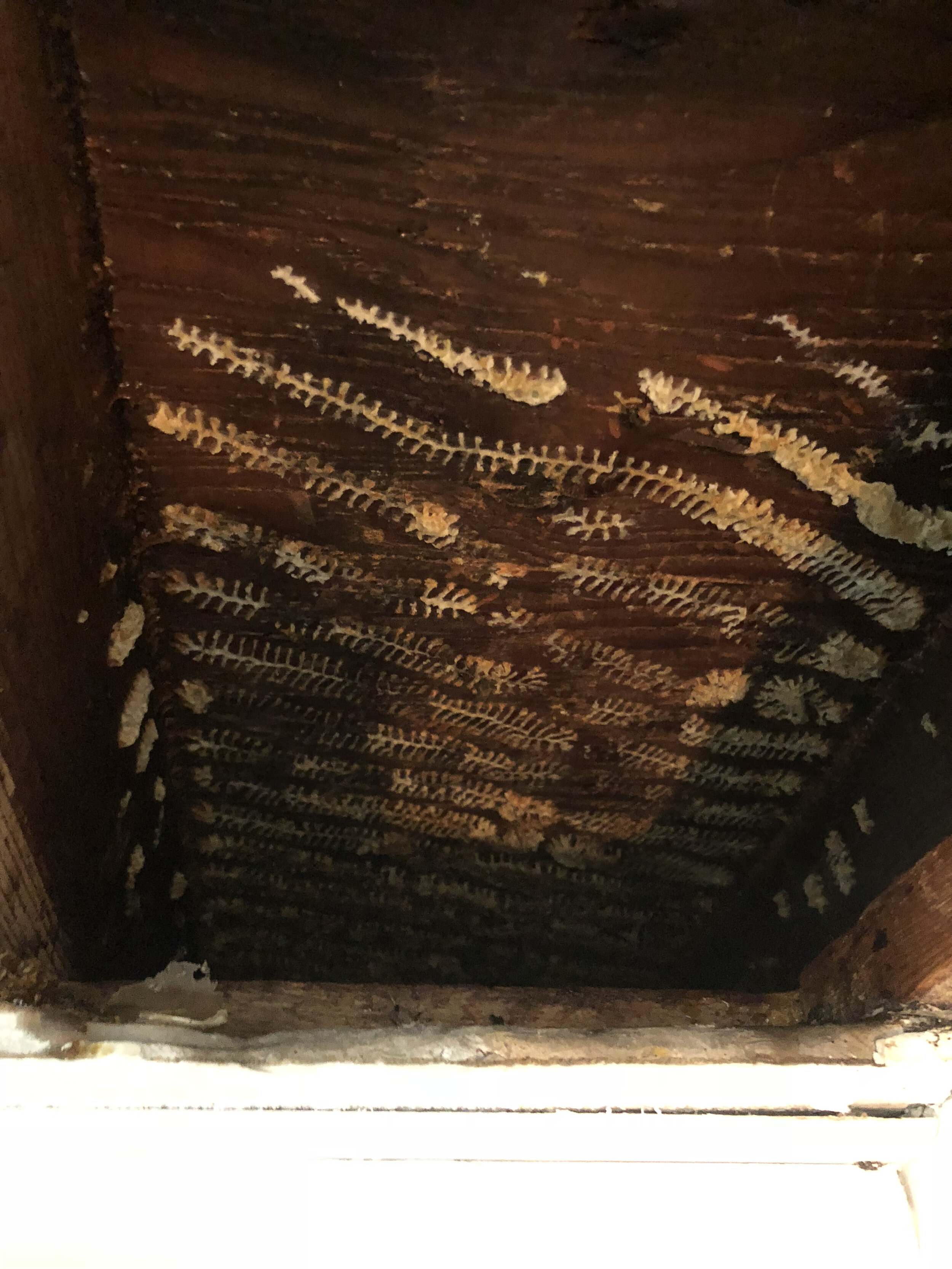


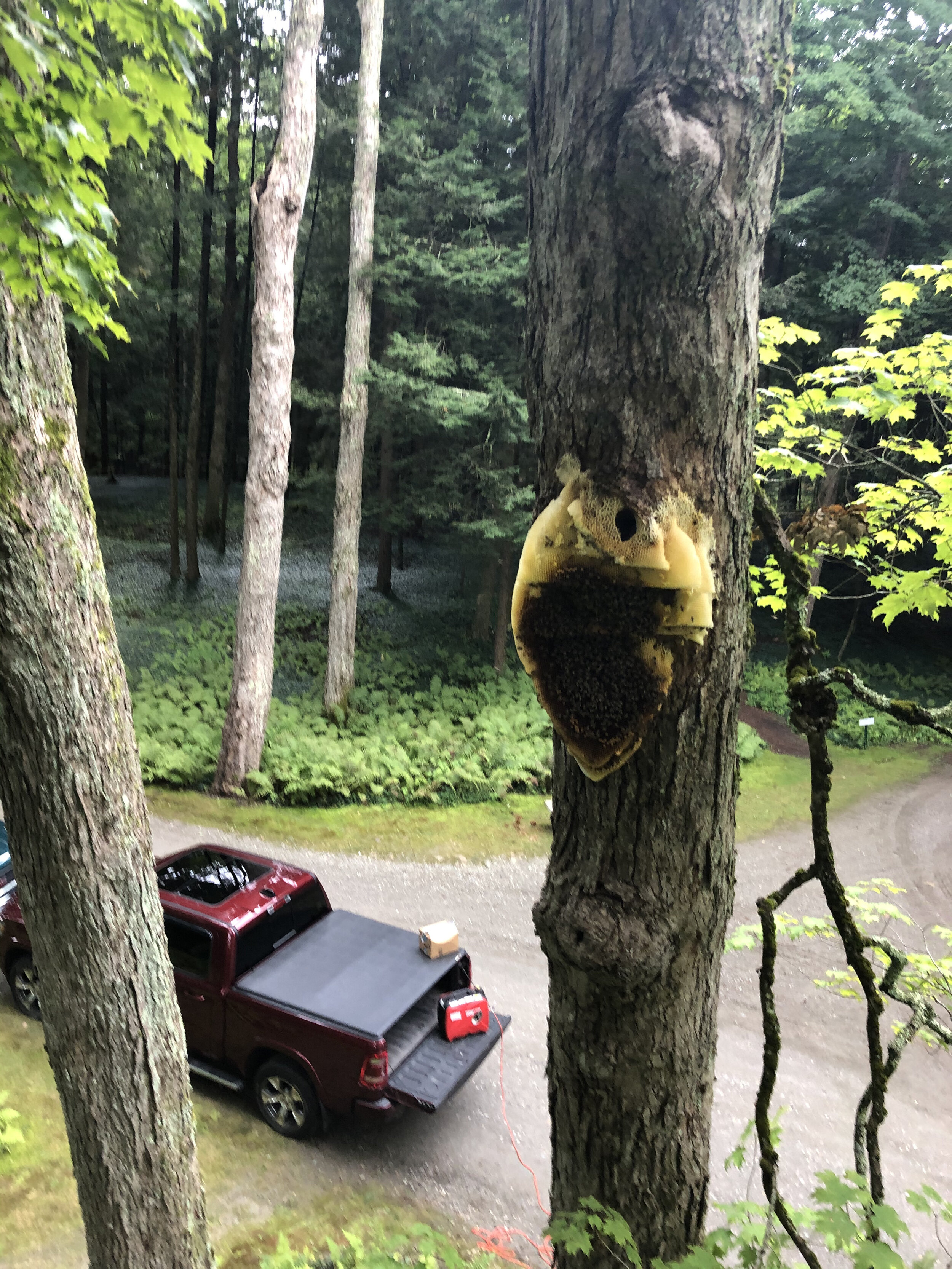






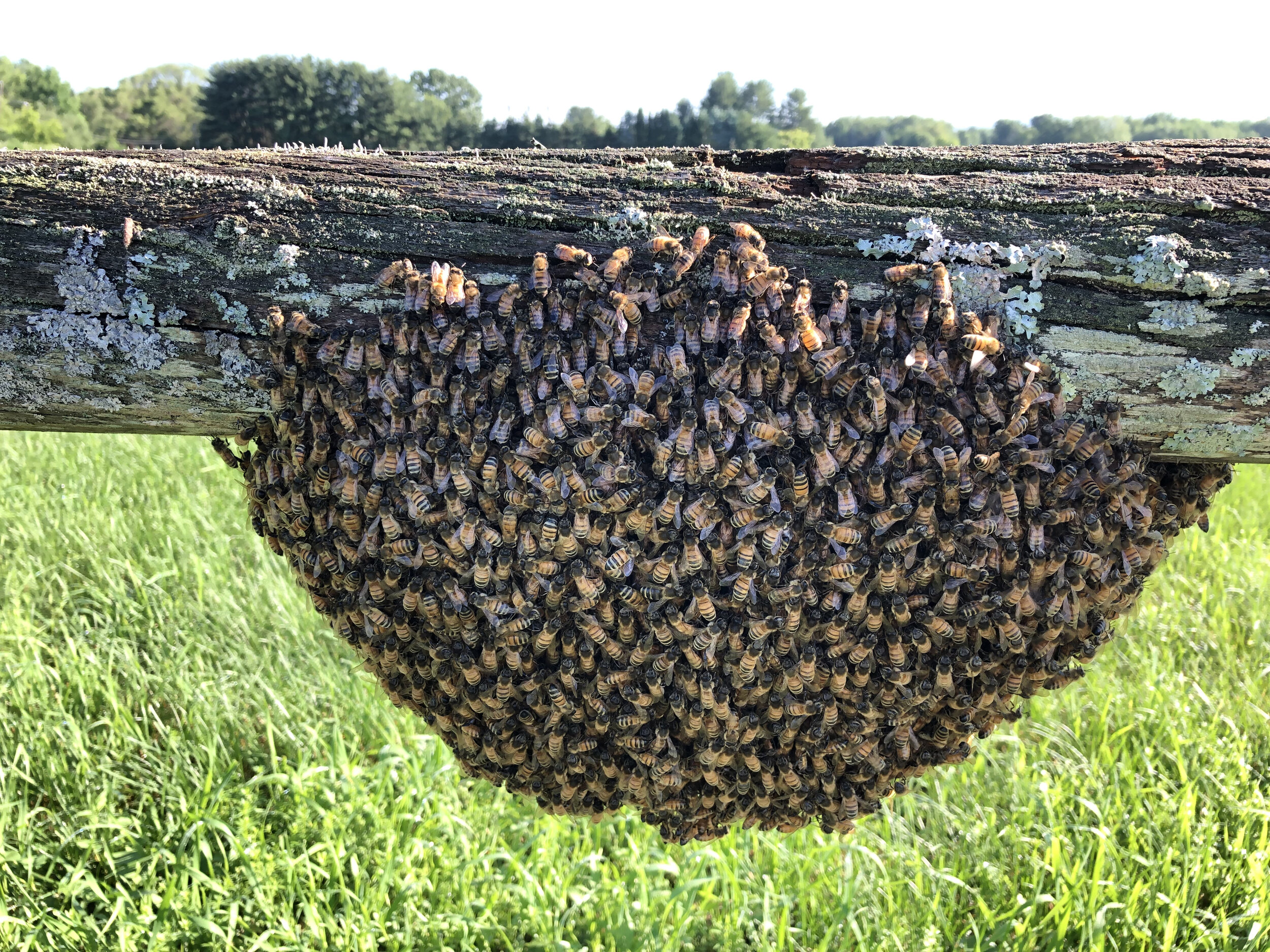

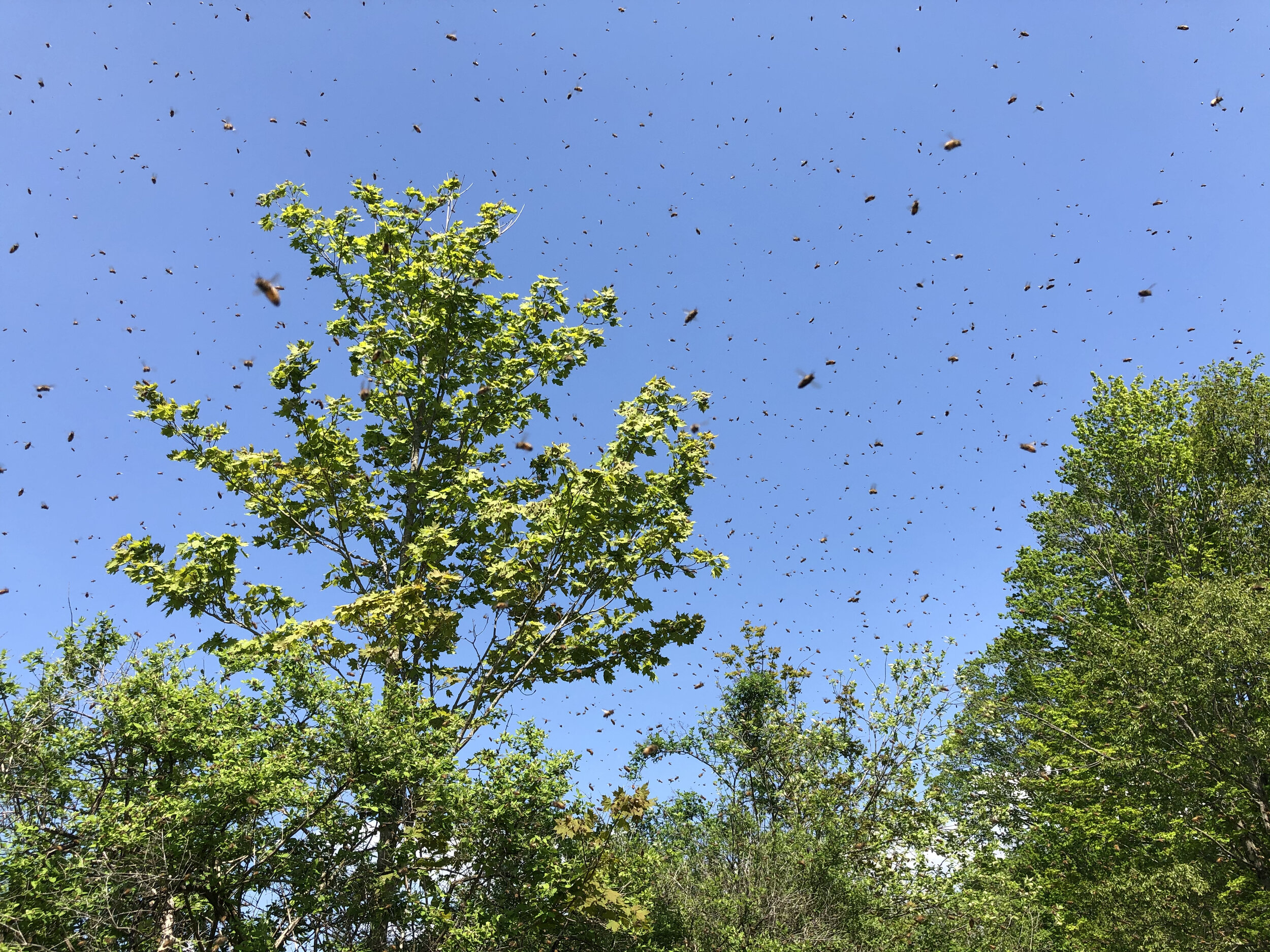
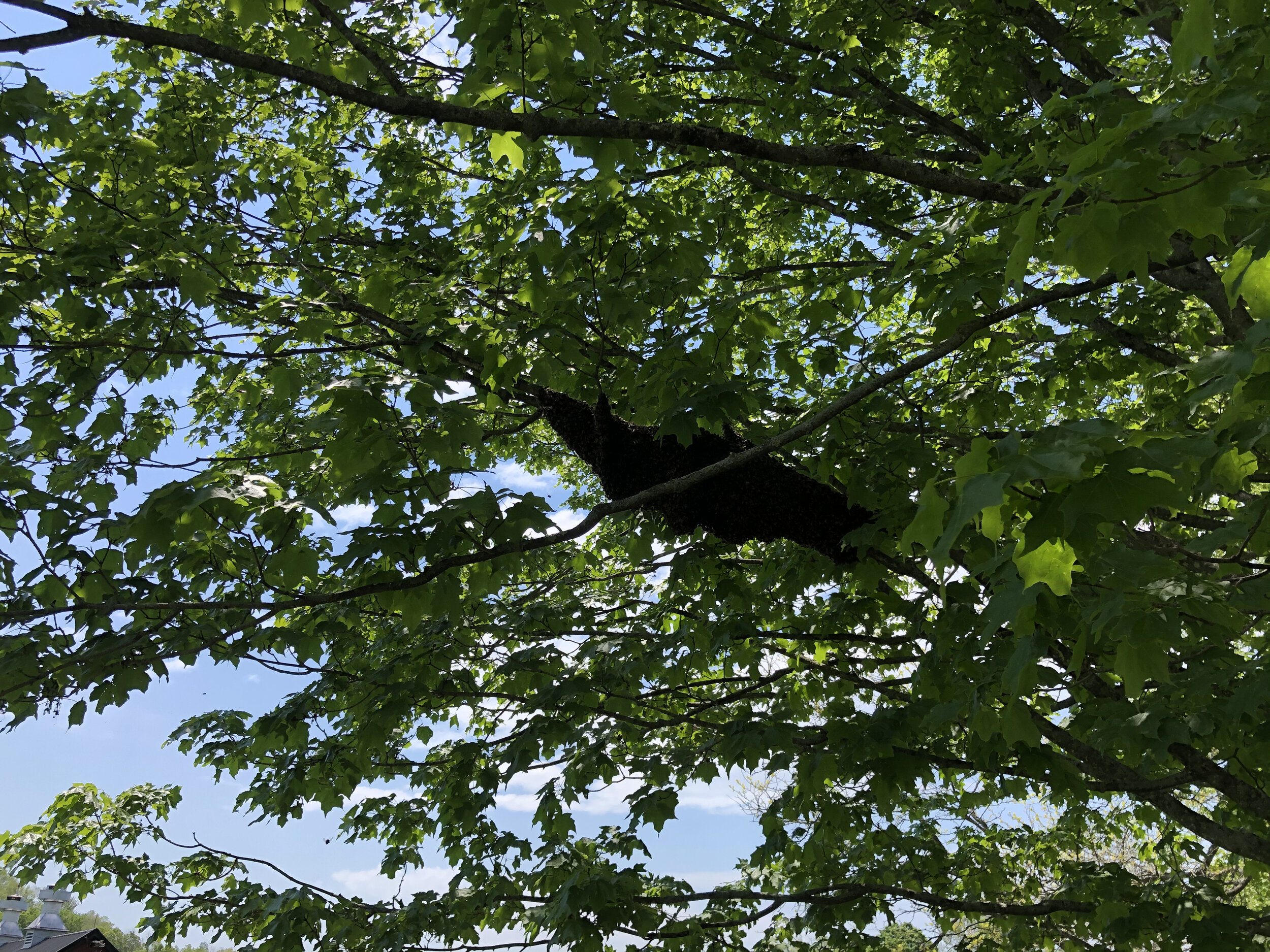
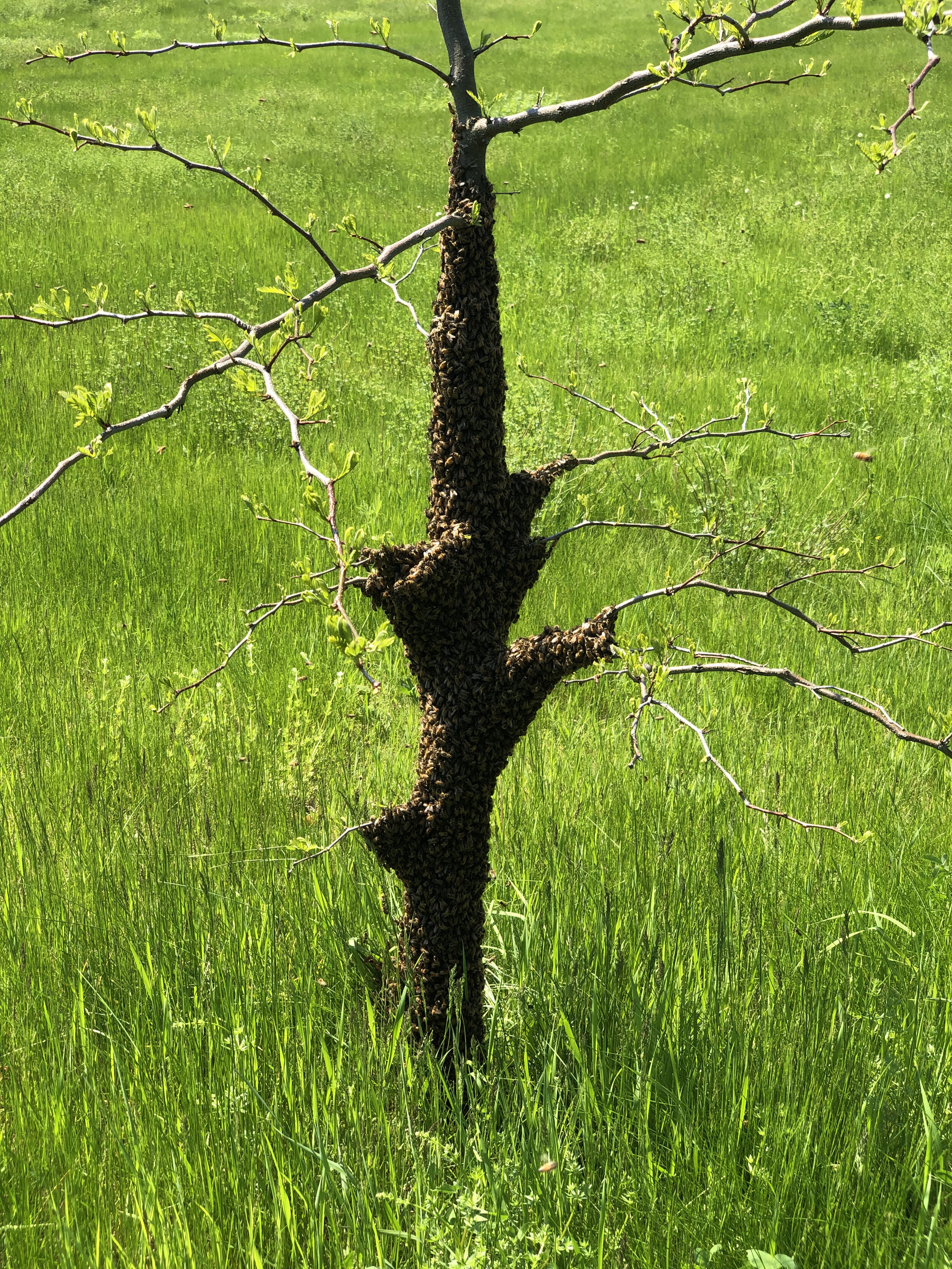
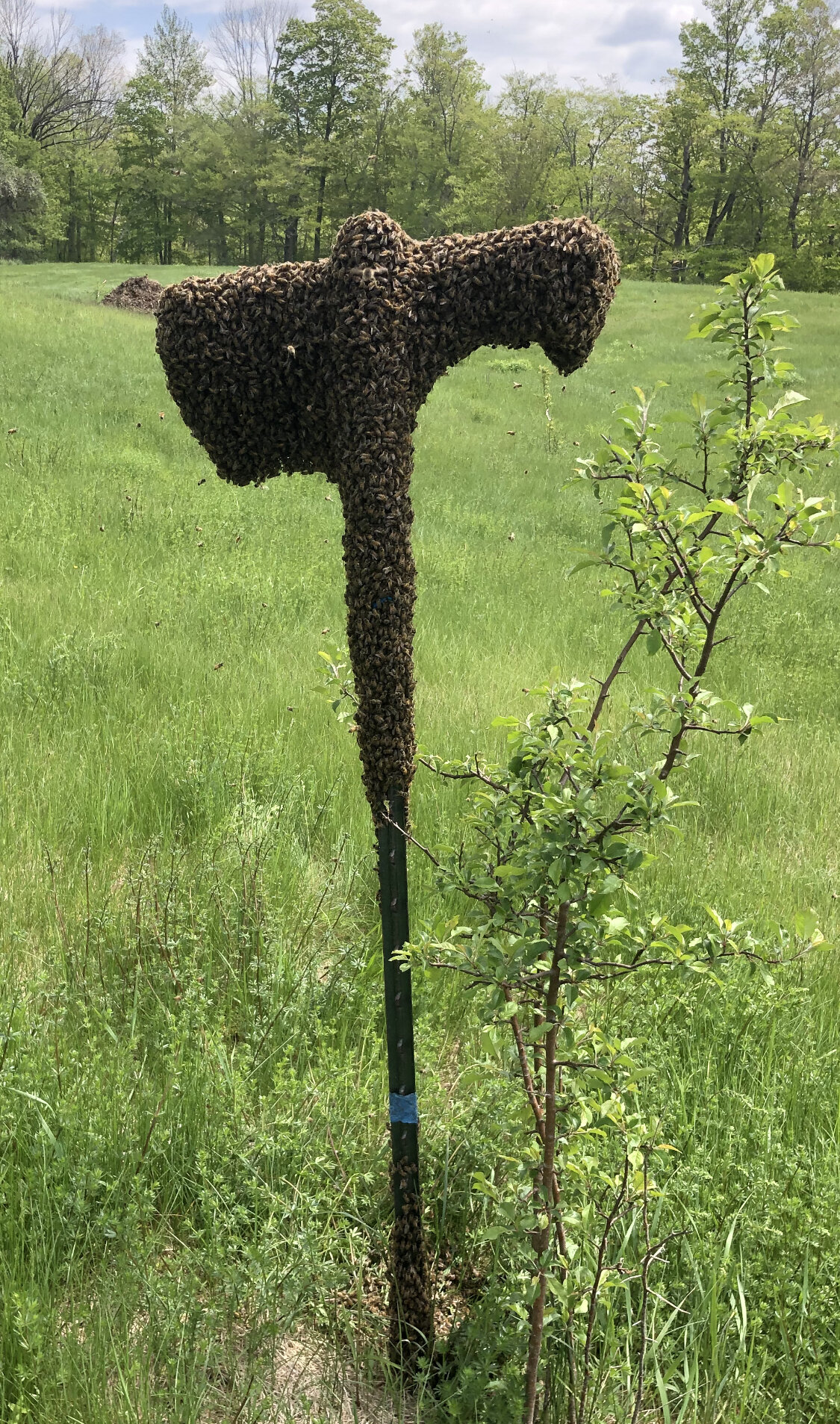
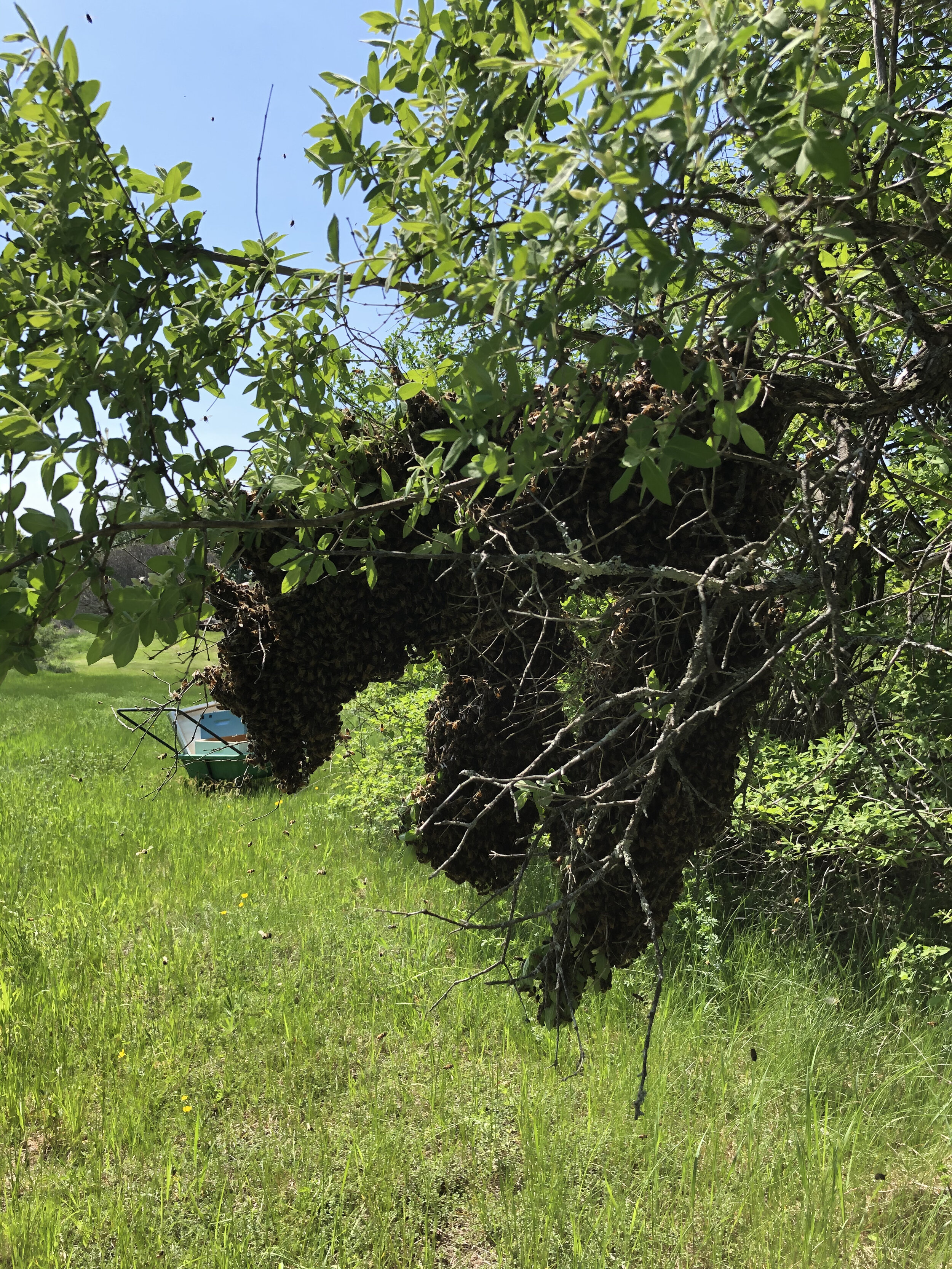
Bee Removal Service
Honey Bee Swarm Removal
We are happy to offer FREE Honey Bee Swarm Removal.
WHAT TO DO IF YOU FIND A SWARM?
1) IMMEDIATELY Call or Text 413-770-3321 with your name and the exact swarm location address
2) If possible, AFTER completing step 1, please send the following:
What is the swarm on? tree branch, sign, wall, etc.
What size is the swarm? baseball, pineapple, basketball, etc.
How high off the ground is the swarm located?
How long has the swarm been there?
Established Honey Bee Colony Removal
When bees find their way into walls, floors, or eaves of buildings, they often wind up between 2x4 studs or 2x6 joists. We are happy to provide complete removal of established Honey Bee Colonies. We have extensive honey bee colony removal experience, are professional, reliable, insured, and happy to provide references. After the removal, the entire rescued colony will be relocated to our organic farm, where the bees can continue to thrive and benefit the environment.
WHAT TO DO IF YOU FIND AN ESTABLISHED COLONY:
1) DO NOT block or cover colony entrance/exit! This will prevent bees from leaving or returning to the colony and it will certainly agitate them. Bees will also look for an alternate exit and often emerge inside the building.
2) DO NOT spray, fumigate or dust with an insecticide, fumigant or any other substance. This can be hazardous, will contaminate the area, and will make the removal more difficult and costly.
3) CALL US at 413-770-3321 ASAP for professional help! We provide removal of established honey bee colonies. We have the expertise and equipment to safely provide you with 100% non-toxic, LIVE BEE REMOVAL!
FAQs
What is a swarm ?
The term SWARM is often to describe a large group of bees which, technically is incorrrect. A SWARM is a specific stage in the natural life cycle of a honey bee colony — it is the way that a colony reproduces. When a colony is thriving and has surplus bees and resources, it become crowded. If a colony decides to swarm, 40-50% of bees in the colony leave with the Queen as a swarm to established a new colony elsewhere. This process is intense and exciting, as thousands of bees race out of the hive and take flight in a large, seemingly disorganized, expanding cloud of bees, while they wait for their Queen. This phase is usually noticeable because the cloud of bees tends to grow larger and larger until the Queen finally exits the colony. When she does fly out, she will find a nearby object, e.g. a tree limb, the side of house, a street sign, picnic table, etc. on which to rest. Once she lands, all the bees will settle into a cluster around her. The cluster will keep her warm and protected while the “scout” bees go out to find a suitable location for the swarm to start a new colony.
How long does it take to capture a swarm?
Swarms are typically easy to remove, and the time required is determined primarily by the location and access. Swarms that require ladders or tree climbing often take longer, as do swarms that are intertwined in tree branches, fences, and especially immoveable structures.
When removing an established honey bee colony, why is it important to remove all of the bees and comb, as soon as possible?
The longer a colony remains in place, the more problematic it may become. Colonies can easily grow to 60,000+ bees and the more bees in a colony, the more guard bees will be delegated for hive defense.
If you kill the bees, the dead bodies will eventually decay and will certainly produce a disgusting, foul odor.
Any remnants of honey left behind that is exposed to moisture or high humidity will eventually ferment and start dripping. This can make a huge mess, especially inside structures because it can stain your walls, ceilings, floors, etc.
Any resources left behind WILL eventually attract additional pest insects and rodents.
Also, since we rescue every colony we remove and relocate them to our organic farm, these resources will help the bees adjust to their new home more quickly and increase their chance of surviving the next winter.
How long does it take to remove an established honey bee colony?
These types of removals are much more complicated than swarm removals. They typically require multiple trips to the location site and generally take 4-12 hours to complete, depending on colony size and access.

